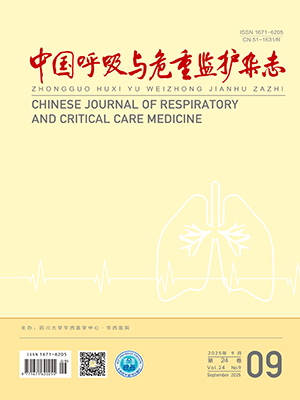Objective To evaluate the effects of different ways of exercise training on elderly patients with chronic obstructive pulmonary disease ( COPD) , which focuse on the changes of cardiopulmonary exercise function and COPD symptoms. Methods 54 cases of elderly patients with stable COPD were randomly allocated to a control ( 15 cases) , a lower-limb ( 20 cases) , or a upper-Limb and lower-Limb combined exercise group ( 19 cases) . All patients received conventional medical therapy.
Meanwhile, the exercise groups received training for 16 weeks. The improvements of resting spirometry,cardiopulmonary exercise test ( CPET) , and dyspnea ( Borg scale rating) were evaluated before and after the training scheme. Results There was no significant difference in resting spirometry after exercise training
( P gt;0. 05) . Exercise tolerance and Borg scale were improved in both exercise groups significantly than baseline ( P gt;0. 05) and the control group ( P gt;0. 05) . VE@ 50% Vo2max was improved significantly in the combined group( 4. 81 ±0. 70 vs. 2. 49 ±1. 15, P lt; 0. 001) . Breathing reserve ( BR) was elevated in both
exercise groups than the control ( P lt; 0. 01) , and the improvement in the combined group was more significant ( 9. 79 ±1. 57 vs. - 1. 36 ±2. 82, P lt; 0. 001) . Gas exchange response ( VD /VT ) was slightly improved after rehabilitation in the combined group( P lt;0. 05) . Borg scale after rehabilitation was correlated
with FEV1% pred, BR, and Vo2 /kg after rehabilitation[ Borg = 9. 516 - 0. 174 ×FEV1% pred - 0. 156 × (Vo2 /kg) - 0. 023 ×BR] . Conclusions Upper-limb combined with lower-limb exercise training can markedly improve the level of aerobic capacity and ventilation in elderly patients with stable COPD, and then improve the exercise tolerance.
Citation: CUI Shilei,JIANG Weiping,ZHU Huili,ZHOU Yinan,ZHOU Jin.. Effects of Upper-Limb and Lower-Limb Exercise Training in Elderly Patients with Chronic Obstructive Pulmonary Disease. Chinese Journal of Respiratory and Critical Care Medicine, 2011, 10(2): 107-109. doi: Copy
Copyright © the editorial department of Chinese Journal of Respiratory and Critical Care Medicine of West China Medical Publisher. All rights reserved




